The 30 Best Places to Live in Maine: Top Communities and Neighborhoods
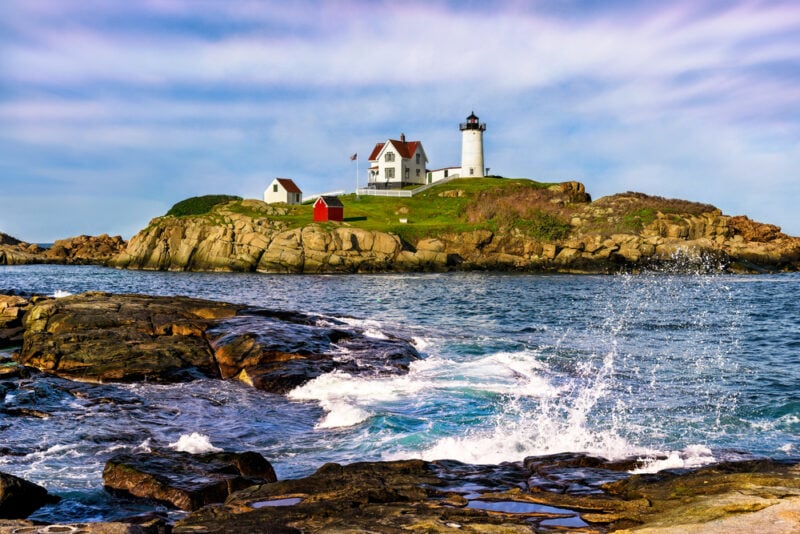
Maine offers residents a unique combination of coastal beauty, outdoor recreation opportunities, and strong communities that make it one of the most desirable states to call home.
From bustling coastal cities to charming small towns nestled in pine forests, the Pine Tree State provides diverse living options for different lifestyles and preferences.
This comprehensive guide examines thirty of Maine’s top communities, analyzing factors such as cost of living, school quality, recreational amenities, and local culture to help prospective residents make informed decisions.
The state’s appeal extends from major cities like Portland and Bangor to smaller coastal gems like Bar Harbor and Kennebunk, each offering distinct advantages and characteristics that contribute to Maine’s reputation for quality living.
Here are the 30 best places to live in Maine:
30. Farmington
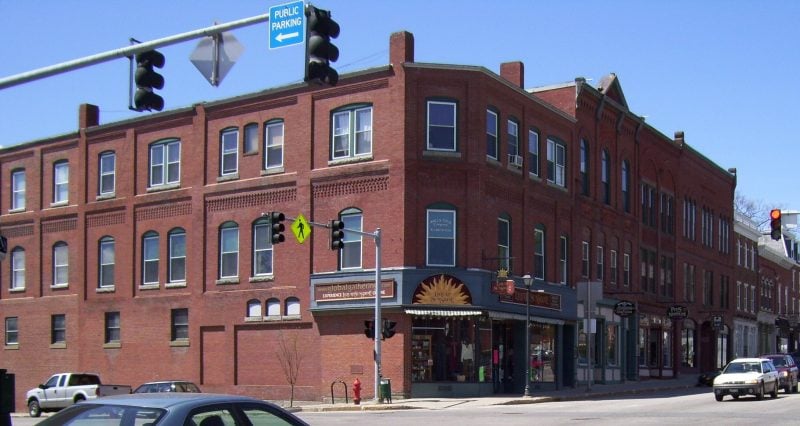
Farmington offers residents a sparse suburban feel with a population of around 8,000 people. The town sits in Franklin County and attracts both young professionals and retirees.
Most residents own their homes in this community. The typical household earns $40,430 annually, which falls below the national median income.
Home prices in Farmington remain less expensive than Maine’s state average of $243,042. This affordability makes the area accessible for various income levels.
The town maintains a small-town atmosphere with peaceful surroundings. Residents enjoy access to various local amenities and businesses throughout the area.
Farmington’s poverty rate stands at 25.3%, which exceeds the national average. Despite economic challenges, the community continues to draw people seeking a quieter lifestyle away from larger cities.
The area provides a mix of rural charm and suburban convenience for those preferring smaller communities.
29. Calais
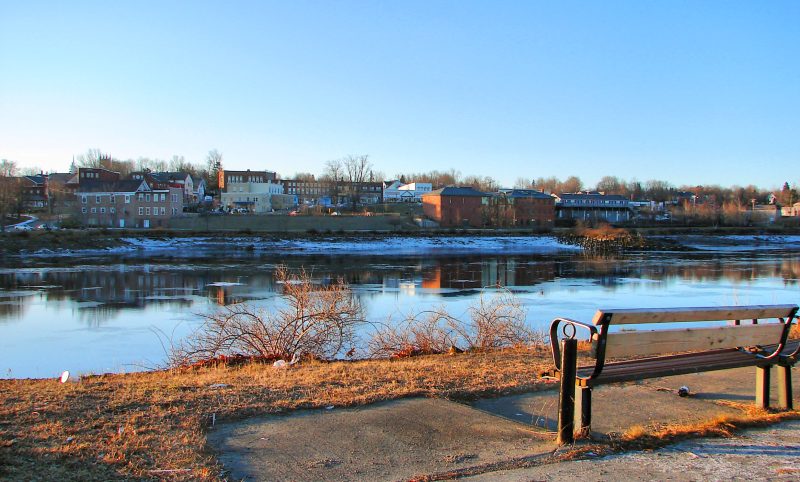
Calais sits on Maine’s eastern border with Canada, offering residents a unique international location. This small city in Washington County has a population of approximately 3,000 people.
The community provides one of Maine’s lowest costs of living. Housing remains affordable compared to most areas in the state.
Calais ranks 9th out of 120 places for lowest cost of living in Maine. The typical household earns $32,601 annually, which is below the national median.
The city receives a livability score of 72 out of 100 from area assessments. Residents enjoy a close-knit community atmosphere with volunteer opportunities.
Outdoor activities are abundant due to the area’s natural landscapes. The border location provides access to both American and Canadian attractions.
The poverty rate stands at 16.5%, which is higher than the national average. Despite economic challenges, Calais maintains its appeal for those seeking affordable living.
28. Winslow
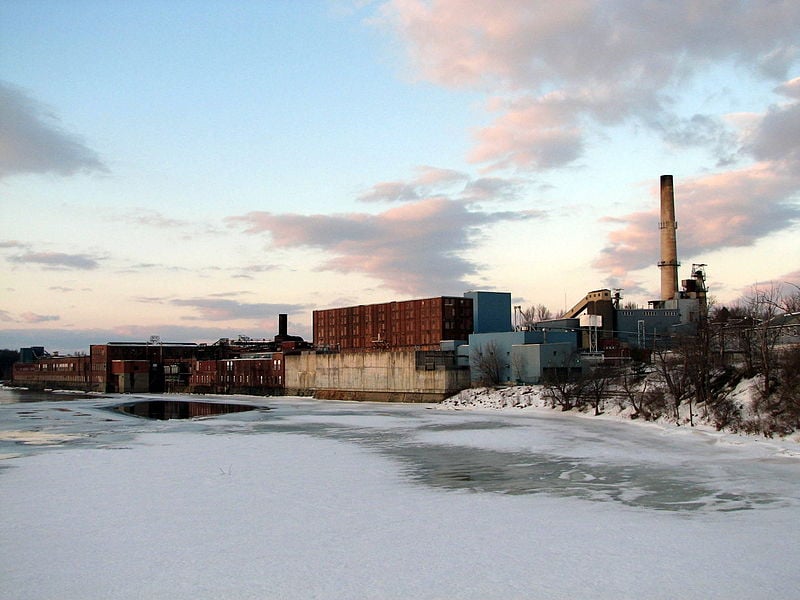
Winslow offers affordable living with median home prices around $175,000, making it accessible for first-time buyers. The town sits about an hour from Portland, providing convenient access to Maine’s largest city.
The Kennebec River flows through Winslow, creating scenic landscapes and outdoor recreation opportunities. Residents enjoy pleasant summers and good air quality throughout the year.
With a population of approximately 4,928 residents, Winslow maintains a small-town atmosphere. The typical household earns $46,980 annually, below the national median but reasonable for Maine’s cost of living.
Home prices in Winslow are less expensive than Maine’s state average of $243,042. The poverty rate stands at 13.2%, which is 6% lower than the national average.
The town’s location provides a balance between rural living and urban accessibility. Four-season weather patterns offer variety throughout the year for outdoor enthusiasts.
27. Gorham
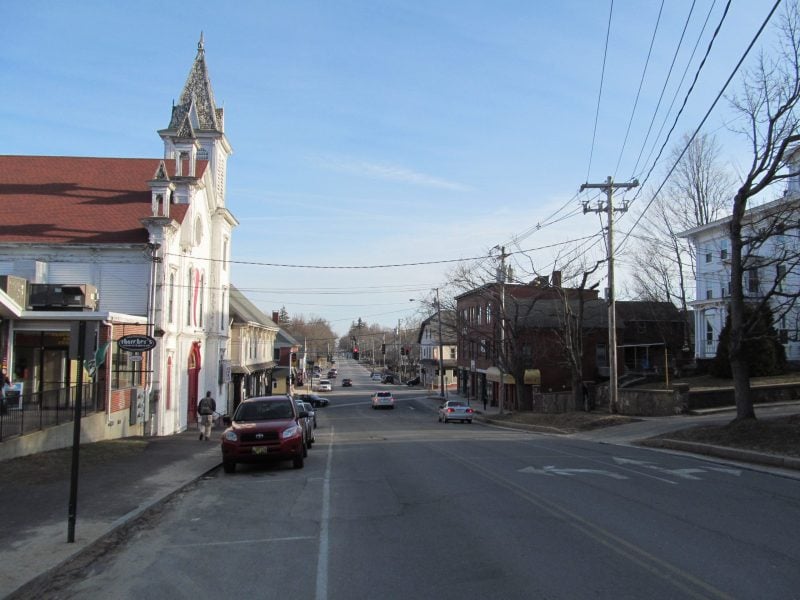
Gorham is a suburban community in Cumberland County with a population of approximately 18,000 residents. The town sits about 30 minutes from Portland, offering convenient access to Maine’s largest city.
The community maintains a strong sense of place with picturesque views of the White Mountains. Most residents own their homes rather than rent, creating stable neighborhoods throughout the area.
Gorham attracts many young professionals who appreciate the suburban-rural atmosphere. The town’s public schools receive high ratings, making it appealing to families with children.
The median household income of around $80,859 exceeds both state and national averages. Home values typically run higher than Maine’s average, with median prices around $262,000.
The poverty rate stands at just 3%, significantly below national levels. This economic stability contributes to Gorham’s reputation as one of Maine’s better places to live.
26. Westbrook
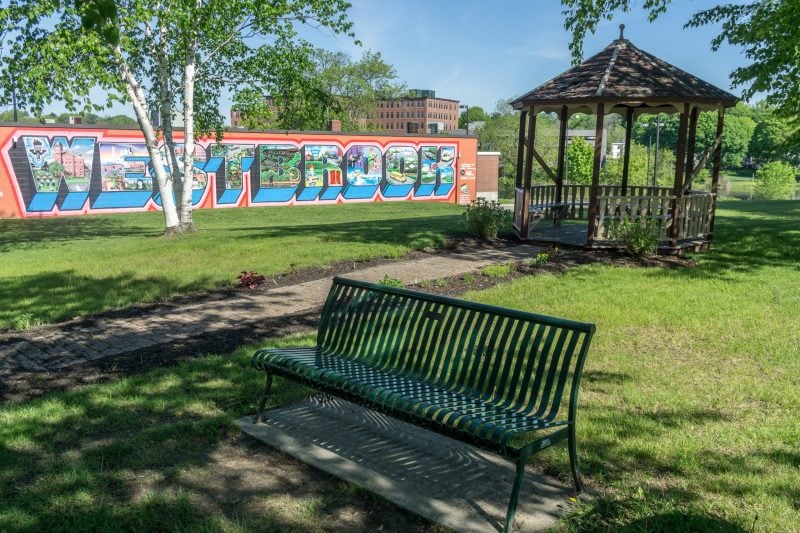
Westbrook has emerged as an attractive alternative to Portland’s rising costs. The city offers affordable housing options that draw young professionals and families seeking value in southern Maine.
Located in Cumberland County, Westbrook maintains a dense suburban atmosphere. Most residents own their homes, creating stable neighborhoods throughout the community.
The city earned a livability score of 83 out of 100, ranking in the 97th percentile nationally. This reflects strong performance across multiple quality-of-life factors.
Westbrook’s school system receives solid ratings, contributing to its family-friendly reputation. The community combines small-city charm with access to coastal Maine amenities.
Business owners find favorable conditions here, with lower commercial rents attracting startups and established companies. The welcoming local culture supports both residents and entrepreneurs.
25. Windham
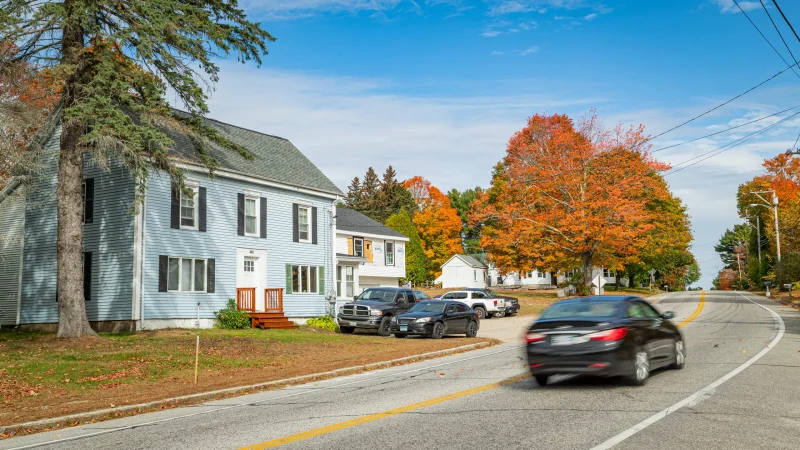
Windham ranks among Maine’s most desirable communities, earning recognition on multiple best places to live lists. The town maintains a population of approximately 18,400 residents in Cumberland County.
Located north of Portland near Sebago Lake, Windham offers convenient suburban living with scenic natural surroundings. The community provides easy access to outdoor activities including hiking and kayaking along the Presumpscot River.
Real estate demand remains strong in Windham, with homes selling in an average of 36 days. The median home price reaches $586,000, reflecting the area’s popularity and market strength.
Windham’s appeal stems from its combination of rural charm and proximity to urban amenities. The town consistently receives high rankings for its low crime rates and quality of life factors.
The community attracts residents seeking peaceful neighborhoods while maintaining access to Portland’s employment and cultural opportunities.
24. Harpswell

Harpswell offers residents a rural coastal lifestyle with stunning ocean views and outdoor recreation opportunities. The town has a population of 5,029 people located in Cumberland County.
Home prices in Harpswell exceed Maine’s state average of $243,042. Most residents own their homes and enjoy the community’s rural character.
The climate remains mild year-round. Summer temperatures reach the mid-70s while winter temperatures rarely drop below freezing.
Harpswell maintains low unemployment at approximately 3.5%. The town attracts many retirees and residents with moderate political views.
Public schools perform above average compared to state standards. The community provides abundant parks and outdoor activities like sailing and fishing.
Limited commercial amenities present challenges for daily conveniences. Higher living costs compared to urban areas may impact some budgets.
23. Houlton
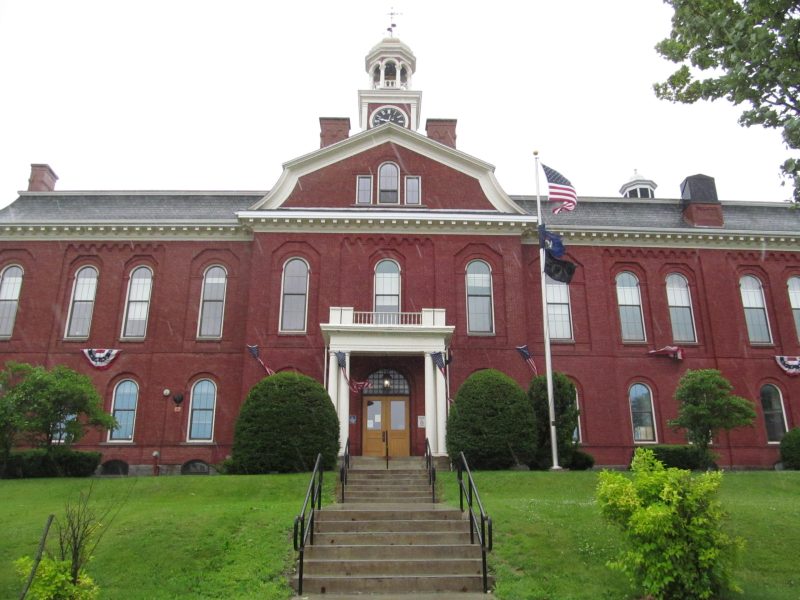
Houlton serves as the county seat of Aroostook County in northern Maine. The town has a population of 6,051 residents and offers a sparse suburban atmosphere.
Most residents in Houlton own their homes rather than rent. The community attracts many retirees who appreciate the quieter lifestyle.
Home prices in Houlton remain significantly below Maine’s state average of $243,042. This affordability makes homeownership accessible for many families.
The town ranks #66 out of all Maine communities with a livability score of 68 out of 100. Rolling hills and lush forests create scenic backdrops throughout the area.
Houlton functions as both a cultural and economic center for the region. The community hosts events like the annual Winter Carnival in early February.
Residents tend to have conservative political leanings. Job opportunities can be limited compared to larger Maine cities.
22. Sanford
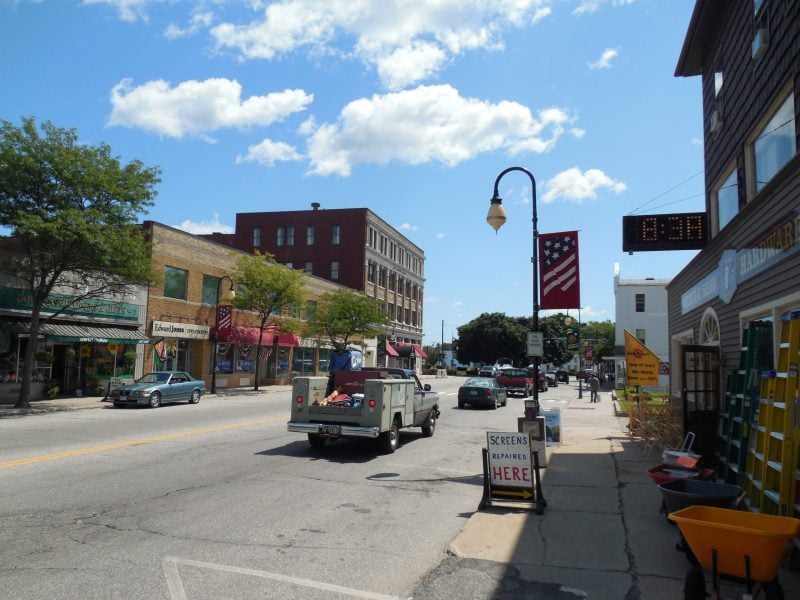
Sanford offers residents an affordable alternative to Maine’s pricier coastal communities. Home prices remain below the state average of $243,042, making homeownership more accessible for many families.
The city earned a livability score of 80 out of 100 based on key metrics. This rating reflects strong performance across amenities, education, employment opportunities, and cost of living factors.
Sanford provides a four-season lifestyle typical of inland Maine communities. Residents enjoy access to outdoor recreation while maintaining proximity to both Portland and New Hampshire’s seacoast region.
The community balances small-town charm with practical amenities that support daily life. Local schools, shopping, and services meet most residents’ needs without requiring frequent travel to larger cities.
Transportation access connects Sanford to regional employment centers and recreational destinations throughout southern Maine.
21. Waterville
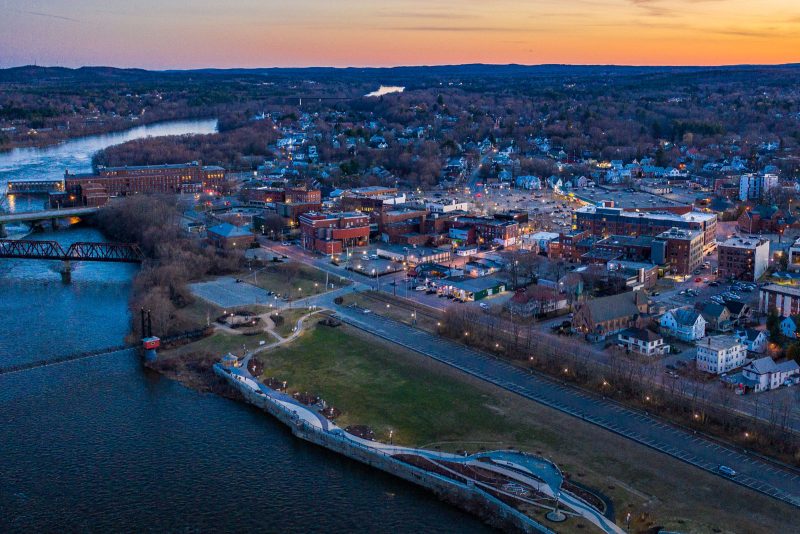
Waterville offers residents an affordable alternative to Maine’s pricier housing markets. Home prices sit well below the state average of $243,042, making homeownership more accessible.
The city has a population of 16,704 and provides a dense suburban atmosphere. Most residents choose to rent rather than own their homes.
Young professionals make up a significant portion of Waterville’s demographic. The community tends to lean liberal in its political preferences.
Located in Kennebec County, Waterville combines suburban convenience with small-town charm. The city offers various neighborhoods to match different lifestyle preferences.
Waterville ranks as the 39th best place to live in Maine with a livability score of 73 out of 100. This rating reflects the city’s balance of amenities, housing costs, and community features.
The area attracts residents seeking affordable living without sacrificing access to urban conveniences and community amenities.
20. Topsham
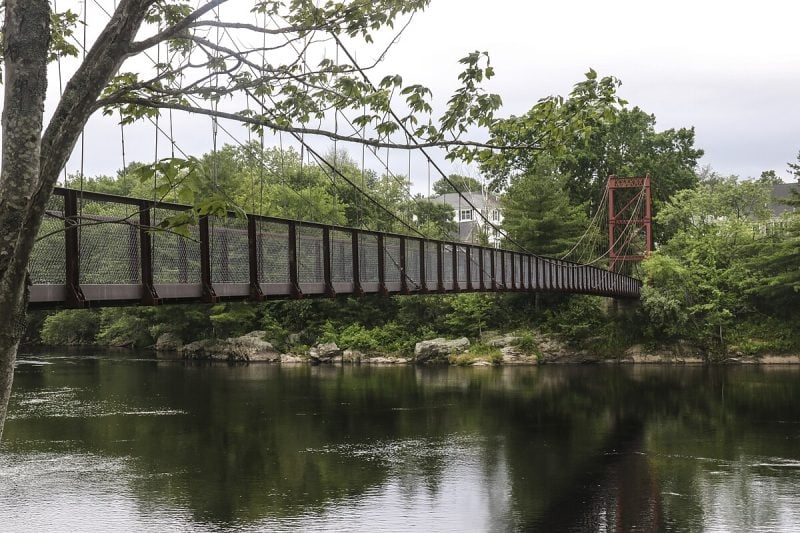
Topsham is a small waterfront town in Sagadahoc County with a population of approximately 9,600 residents. The community offers a sparse suburban atmosphere where most residents own their homes.
The town provides easy access to urban centers like Portland and Lewiston while maintaining its small-town character. Residents enjoy numerous coffee shops and parks throughout the area.
Topsham attracts both young professionals and retirees who appreciate the peaceful waterfront setting. The public schools perform above average, making it appealing to families.
Home prices in Topsham exceed Maine’s state average of $243,042. The town ranks #25 in Maine for overall livability with a score of 76 out of 100.
Outdoor recreation opportunities abound in this scenic location. Topsham combines accessibility to larger cities with the charm of a close-knit community.
19. Rockland
Rockland sits along Maine’s scenic Penobscot Bay coast with a population of approximately 7,100 residents. This small coastal city combines maritime charm with cultural attractions.
The city offers more affordable housing than many Maine locations. Home prices in Rockland fall below the state average of $243,042, making it accessible for various income levels.
Rockland’s poverty rate stands at 11.6%, which is 17% lower than the national average. The typical household earns $46,895 annually, though this remains below the national median.
The waterfront location provides numerous recreational opportunities and scenic views. Historical buildings dot the cityscape, reflecting Rockland’s maritime heritage.
Cultural amenities and local attractions draw both residents and visitors. The city’s coastal setting supports various water-based activities and outdoor recreation throughout the year.
18. Bath
Bath ranks among Maine’s most livable cities with a population of 8,333 residents. The city earned a livability score of 74 out of 100 based on multiple quality of life factors.
The poverty rate stands at 10.7%, which is 24% lower than the national average. Typical households earn $55,396 annually, though this falls below the national median of $67,500.
Bath offers diverse housing options ranging from apartments to single-family homes. The city provides affordable living without sacrificing quality of life.
Residents benefit from Bath’s strategic location along Maine’s coast. The community maintains strong local amenities and public services that contribute to its high ranking among Maine cities.
Bath combines small-town charm with practical advantages for families and professionals seeking a Maine lifestyle.
17. Kittery
Kittery stands as Maine’s oldest incorporated town, located in York County with a population of approximately 10,000 residents. The coastal community sits on the Atlantic Ocean and maintains a rich maritime history.
The town offers residents a sparse suburban feel where most people own their homes. Young professionals and retirees make up a significant portion of the population, creating a diverse community atmosphere.
Kittery ranks #8 among Maine towns for livability, earning an overall score of 81 out of 100. The public schools perform above average compared to state standards.
Home prices in Kittery exceed Maine’s average of $243,042, reflecting the area’s desirability. The town features beaches, parks, and fine dining establishments that attract both residents and visitors.
The Portsmouth Naval Shipyard provides employment opportunities, while tourism and healthcare serve as primary industries. Kittery’s famous outlet stores draw shoppers from across New England.
16. Ellsworth
Ellsworth stands as the gateway to Acadia National Park, making it a prime location for outdoor enthusiasts. The city houses approximately 7,500 residents in Hancock County.
Home prices in Ellsworth remain below Maine’s state average of $243,042. This affordability attracts families and retirees seeking value in their housing investments.
The city ranks 14th out of 104 for best retirement destinations in Maine. Young professionals also find opportunities here, though it ranks 34th out of 120 cities for this demographic.
Ellsworth maintains high livability scores despite its smaller size. The community offers essential amenities while preserving small-town character.
Residents enjoy access to local attractions, dining options, and recreational activities. The proximity to Acadia National Park provides year-round outdoor recreation opportunities just minutes from downtown.
15. Bar Harbor
Bar Harbor sits on Mount Desert Island with a population of 5,198 residents. The town serves as a gateway to Acadia National Park, offering stunning rocky coastlines and quintessential New England charm.
Most residents own their homes in this sparse suburban community. The town features numerous bars, restaurants, coffee shops, and parks that create a vibrant social atmosphere.
Housing costs significantly exceed Maine’s average, with median home prices reaching $606,900. Home appreciation has grown 16.5% over the past decade.
The community blends natural beauty with small-town amenities. Residents enjoy access to outdoor recreation through the nearby national park and coastal activities.
Bar Harbor attracts both visitors and permanent residents seeking coastal living with modern conveniences. The town maintains its historic character while providing contemporary dining and entertainment options.
14. Kennebunk
Kennebunk ranks as the second-best place to retire in Maine out of 104 communities. This York County town has a population of approximately 11,692 residents and offers a sparse suburban atmosphere.
The community attracts many retirees and professionals alike. Most residents own their homes rather than rent. The town maintains above-average public schools that serve the area well.
Kennebunk’s economy extends beyond tourism, providing diverse employment opportunities. The coastal location makes it a popular beach destination with various attractions and activities available year-round.
Housing costs exceed Maine’s state average of $243,042. The town features low crime rates and good air quality. Public schools consistently perform above state averages.
Residents tend to lean liberal politically. The area shares one of Maine’s top five high schools with neighboring communities. Kennebunk offers excellent amenities and maintains high livability scores across multiple categories.
13. Saco
Saco ranks among Maine’s top places to live, earning recognition for its strong community metrics and quality of life. The city of approximately 19,700 residents combines coastal charm with practical amenities.
The typical household in Saco earns $71,755 annually, which exceeds the national median income. This economic stability contributes to the city’s appeal for families and professionals.
Housing costs in Saco run higher than Maine’s state average of $243,042. The premium reflects strong demand for properties in desirable neighborhoods throughout the city.
Saco’s poverty rate stands at 8.2%, significantly lower than national figures. This statistic indicates economic health and community stability.
The city consistently appears on best places to live rankings for Maine. Multiple rating organizations highlight Saco’s combination of affordability, safety, and community amenities as key strengths.
12. Biddeford
Biddeford stands as a historic mill town experiencing significant revival in York County. The Saco River flows through the city, creating scenic views alongside former industrial sites like the Pepperell Mill.
This suburban community houses 22,463 residents who enjoy a dense suburban atmosphere. Most residents rent their homes, and the area attracts many young professionals.
The city features a historic downtown district filled with small businesses. Local amenities include quality schools and community organizations that support daily life.
Biddeford consistently ranks among Maine’s top places to live based on livability and affordability metrics. The city offers residents access to outdoor recreation opportunities along the river.
Housing costs exceed Maine’s state average of $243,042, reflecting the area’s desirability. The community tends to lean liberal politically and maintains strong neighborhood connections.
Young professionals find Biddeford particularly appealing due to its blend of historic charm and modern conveniences.
11. Yarmouth
Yarmouth stands out as one of Cumberland County’s premier communities with a population of approximately 9,000 residents. The town offers a sparse suburban atmosphere where most residents own their homes.
The community boasts exceptional educational opportunities. Yarmouth Elementary School, Harrison Middle School, and Yarmouth High School all receive top ratings from the Maine Department of Education.
Residents enjoy access to numerous restaurants, coffee shops, and parks throughout the area. The median household income reaches around $92,000, reflecting the town’s economic stability.
Housing costs exceed Maine’s average, with home prices significantly higher than the state median of $243,042. The overall cost of living sits about 20% above the national average.
Yarmouth maintains low crime rates, contributing to its reputation as a safe community. The town’s quality of life remains high despite the elevated living expenses.
10. Orono
Orono is a college town in Penobscot County with a population of approximately 10,400 residents. The University of Maine anchors this community, creating a vibrant academic atmosphere.
The town sits between the Penobscot and Stillwater rivers, providing natural beauty and outdoor recreation opportunities. Located just north of Bangor on Interstate 95, residents enjoy convenient access to larger city amenities.
Orono’s downtown area features several restaurants and two breweries with full-service taprooms. The college town atmosphere brings cultural events and dining variety that exceeds what many similarly sized Maine communities offer.
The cost of living remains relatively affordable, with expenses running about 3% lower than the national average. However, the median household income of $43,102 falls below the national median of $67,500.
The poverty rate stands at 35%, largely influenced by the student population. Despite this statistic, Orono provides a pleasant small-town lifestyle with four-season climate and ample green spaces.
9. Brunswick
Brunswick stands out as one of Maine’s premier college towns with a population of approximately 21,000 residents. The city earned a livability score of 88 out of 100, ranking in the 99th percentile nationwide.
Located in Cumberland County, Brunswick offers residents access to diverse recreational activities. The Androscoggin River provides excellent kayaking opportunities, while the Midcoast region features numerous antique shops and collectibles stores.
Home prices in Brunswick exceed Maine’s state average of $243,042, reflecting the area’s desirability. The Brunswick Downtown Association actively promotes local businesses and community engagement.
The city combines small-town charm with educational opportunities, creating an attractive environment for families and professionals. Brunswick’s compact size makes it easy to navigate while still offering essential amenities and services that residents need for comfortable living.
8. Freeport
Freeport sits along the scenic Casco Bay coastline in Cumberland County. The town has a population of approximately 8,736 residents.
The community offers a suburban-rural atmosphere where most residents own their homes. The median household income reaches $71,394, which exceeds the national average.
Freeport maintains a low poverty rate of 2.4%. This figure stands significantly below national levels.
The town serves as a popular shopping destination with numerous outlet stores and unique boutiques. Visitors travel from across the region to explore these retail options.
Dining establishments range from casual spots to gourmet restaurants. The area features coffee shops and various food venues throughout the community.
Freeport provides access to parks and outdoor recreation opportunities. The coastal location offers shoreline activities and scenic walks.
The local arts scene includes galleries and community theater productions at the Freeport Performing Arts Center.
7. Falmouth
Falmouth stands out as one of Maine’s premier residential communities. Located in Cumberland County, this town of approximately 12,600 residents offers an exceptional quality of life.
The community boasts excellent public schools and maintains low crime rates. Residents enjoy a sparse suburban atmosphere with abundant parks and recreational opportunities.
Falmouth’s proximity to Portland provides convenient access to urban amenities. This location allows residents to experience both suburban tranquility and city excitement.
The typical household earns $99,861 annually, significantly above the national median. Home values reflect the area’s desirability, with properties averaging well above Maine’s state average.
The town features a charming downtown area with quality shopping and dining options. Outdoor enthusiasts appreciate access to hiking trails and kayaking opportunities along the coast.
Many retirees choose Falmouth for its peaceful environment and community amenities. The town consistently ranks among Maine’s most livable places.
6. South Portland
South Portland sits across the river from Portland, offering suburban convenience without downtown congestion. The city provides excellent access to Maine’s largest city while maintaining its own distinct character.
Families appreciate the area’s high quality of life and strong community amenities. The city consistently ranks well among regional municipalities for livability factors.
Shopping enthusiasts benefit from the Maine Mall’s retail options. Willard Beach offers beautiful coastal recreation opportunities within city limits.
The real estate market features both modern developments and historic properties. Home prices exceed the state average, reflecting the area’s desirability and market demand.
South Portland attracts both businesses and residents with its balanced mix of amenities. The location provides easy commuter access while offering independent municipal services and facilities.
5. Scarborough
Scarborough stands out as one of Maine’s premier coastal communities with a population of 22,747 residents. This Cumberland County town offers a sparse suburban atmosphere where most residents own their homes.
The community attracts many retirees and maintains a liberal-leaning population. Public schools in Scarborough receive high ratings, making it appealing to families with children.
Home prices in Scarborough exceed Maine’s state average of $243,042, reflecting the desirability of the area. The town provides access to beautiful beaches and natural surroundings along the Atlantic Coast at Casco Bay.
Residents enjoy a slower-paced lifestyle with abundant outdoor activities and cultural offerings. The coastal location offers both recreational opportunities and scenic beauty.
Scarborough combines suburban convenience with coastal charm, creating an environment that appeals to various demographics seeking quality of life in southern Maine.
4. Lewiston
Lewiston stands as Maine’s second-largest city with a population of 37,886 residents. The city offers a dense suburban atmosphere where most residents own their homes.
Located in Androscoggin County, Lewiston attracts many families seeking affordable living options. The community tends to lean liberal in its political preferences.
Housing costs vary significantly across different neighborhoods within the city. Downtown areas and waterfront locations typically command higher home values.
More rural sections of Lewiston provide budget-friendly housing alternatives. This variation creates opportunities for different income levels and lifestyle preferences.
The city ranks #3 among the best places to live in Maine. Lewiston receives recognition for its quality of life and community amenities.
Residents enjoy access to local job opportunities and educational resources. The city maintains lower crime rates compared to many urban areas of similar size.
3. Bangor
Bangor stands out as one of Maine’s most livable cities, combining affordability with cultural richness. The cost of living is nearly 17 percent lower than other Maine cities, making it an attractive option for many residents.
Home prices in Bangor remain below the state average of $243,042. This affordability factor contributes significantly to the city’s appeal for potential residents.
The city offers a strong sense of community alongside abundant cultural activities. Known as Stephen King’s hometown, Bangor provides a blend of arts, history, and entertainment options.
Residents enjoy access to good schools and numerous job opportunities. The combination of reasonable housing costs and employment prospects creates favorable living conditions.
Bangor’s location in northern Maine provides access to scenic beauty and outdoor recreation. The relaxed atmosphere and community-focused environment enhance the overall quality of life for residents.
2. Augusta
Augusta serves as Maine’s capital city and offers residents an affordable alternative to larger urban centers. The city sits in Kennebec County, northwest of Portland.
Downtown Augusta has experienced revitalization efforts in recent years. Local entrepreneurs have transformed areas like Water Street with new businesses and improved storefronts.
Housing costs in Augusta remain below the state average of $243,042. This affordability makes the city attractive to young professionals and retirees alike.
The city provides access to outdoor recreation through attractions like Viles Arboretum and Capitol Park. Residents can explore trails, gardens, and distinctive landscapes throughout the area.
Cultural amenities include the Maine State Museum, which showcases the state’s history and heritage. The annual Common Ground Country Fair takes place each September, drawing visitors from across the region.
Augusta combines small-city charm with capital city amenities, creating a balanced living environment for its residents.
1. Portland
Portland stands as Maine’s largest city and cultural hub. The city offers residents access to an expanding art museum featuring works by renowned artists like Warhol and Monet.
The downtown area provides a vibrant mix of restaurants, breweries, and local businesses. Portland’s Old Port district attracts both tourists and locals with its historic brick buildings and waterfront views.
Housing costs in Portland exceed the state average of $243,042. The city’s neighborhoods vary significantly in price and character, from historic areas to modern developments.
Portland receives recognition as one of the top places to live in Maine. The city provides urban amenities while maintaining access to coastal recreation and outdoor activities throughout the four seasons.
What Makes Maine an Appealing Place to Live
Maine offers a unique combination of pristine coastline, four-season outdoor recreation, and tight-knit communities with relatively low crime rates. The state attracts residents seeking natural beauty, cultural authenticity, and a safer lifestyle.
Natural Beauty and Outdoor Activities
Maine’s 3,500-mile coastline provides residents with year-round access to beaches, rocky shores, and lighthouse-dotted landscapes. The state contains over 8,000 lakes and 32,000 miles of rivers, creating abundant opportunities for fishing, boating, and swimming.
Acadia National Park anchors the state’s outdoor recreation scene. The park offers 158 miles of hiking trails and attracts over 3 million visitors annually.
Winter sports thrive across Maine’s terrain. Ski resorts like Sugarloaf and Sunday River provide downhill skiing, while cross-country skiing and snowmobiling trails span thousands of miles statewide.
The state’s forests cover 90% of its land area. These woodlands support hunting, camping, and hiking activities throughout spring, summer, and fall seasons.
Coastal activities define much of Maine’s appeal. Residents can participate in lobster fishing, sea kayaking, and sailing from numerous harbors and marinas.
Community Spirit and Local Culture
Maine communities maintain strong traditions centered around local festivals, farmer’s markets, and seasonal celebrations. Towns host annual events like blueberry festivals, lobster races, and winter carnivals that bring residents together.
Local food culture emphasizes fresh seafood, particularly lobster, clams, and scallops harvested from coastal waters. Farm-to-table restaurants showcase locally grown produce, maple syrup, and craft beverages.
Small-town atmospheres prevail even in larger cities like Portland and Bangor. Residents often know their neighbors and participate in town meetings where local issues receive direct community input.
Artisan crafts and local businesses receive strong community support. Maine produces distinctive pottery, wooden crafts, and textiles that reflect regional character and skills passed down through generations.
Safety and Quality of Life
Maine consistently ranks among the safest states in America with violent crime rates well below national averages. Property crime rates also remain significantly lower than most other states.
Healthcare access benefits from Maine’s network of regional medical centers and rural health clinics. The state maintains a physician-to-population ratio that exceeds many rural areas nationwide.
Educational opportunities include well-funded public schools and respected institutions like Bowdoin College and the University of Maine system. Many communities prioritize education funding and maintain smaller class sizes.
Environmental quality remains high with clean air, pristine water sources, and minimal industrial pollution. The state enforces strict environmental protections that preserve natural resources for future generations.
Important Considerations Before Moving to Maine
Maine offers stunning landscapes and friendly communities, but prospective residents face housing affordability challenges, limited public transportation, and a job market concentrated in specific industries. Understanding these factors helps determine if Maine matches your lifestyle and financial goals.
Cost of Living and Housing Trends
Maine faces a significant housing shortage that drives up both rental and purchase prices across the state. The median home price varies dramatically by region, with coastal areas commanding premium prices compared to inland communities.
Housing Market Challenges:
-
Limited inventory creates competitive buying conditions
-
Seasonal demand from tourists affects rental availability
-
Rural properties may require septic systems and well water
Utility costs run higher than the national average due to Maine’s cold winters and reliance on heating oil or propane. Electricity rates also exceed most other states, particularly impacting year-round residents.
Property taxes vary by municipality but generally remain moderate compared to other New England states. However, vehicle registration and inspection fees add to annual expenses.
Accessibility and Transportation
Maine’s rural nature means limited public transportation options outside of Portland and a few other urban centers. Most residents require personal vehicles for daily activities, work commutes, and accessing essential services.
Transportation Realities:
-
Amtrak serves only southern coastal towns
-
Bus service operates primarily between major cities
-
Winter driving conditions require appropriate vehicles and experience
Interstate 95 connects southern Maine to Boston and other major cities, but travel times increase significantly during tourist seasons. Rural roads may lack regular maintenance, and cell phone coverage becomes spotty in remote areas.
Airport access centers on Portland International Jetport for domestic flights, while Boston Logan remains the closest major international hub.
Employment Opportunities
Maine’s job market concentrates heavily in healthcare, tourism, education, and natural resources. The state’s aging population creates demand for medical professionals and senior care workers.
Key Employment Sectors:
-
Healthcare: Hospitals and clinics seek nurses, technicians, and specialists
-
Tourism: Seasonal opportunities in hospitality and recreation
-
Education: K-12 schools and universities provide stable positions
-
Marine industries: Lobstering, fishing, and boat building
Remote work opportunities have expanded since 2020, attracting professionals from other states. However, reliable high-speed internet remains unavailable in some rural communities.
The state’s flat population growth limits job creation compared to faster-growing regions. Seasonal employment fluctuations affect many coastal and tourist-dependent communities.





